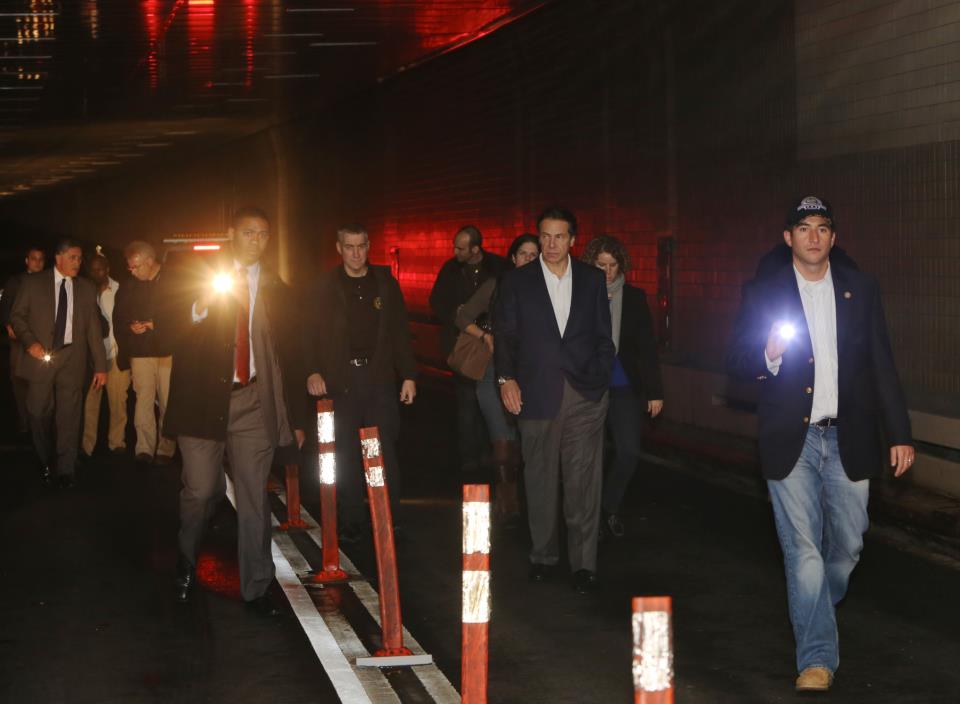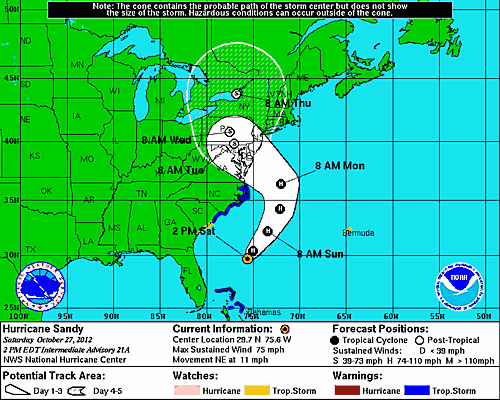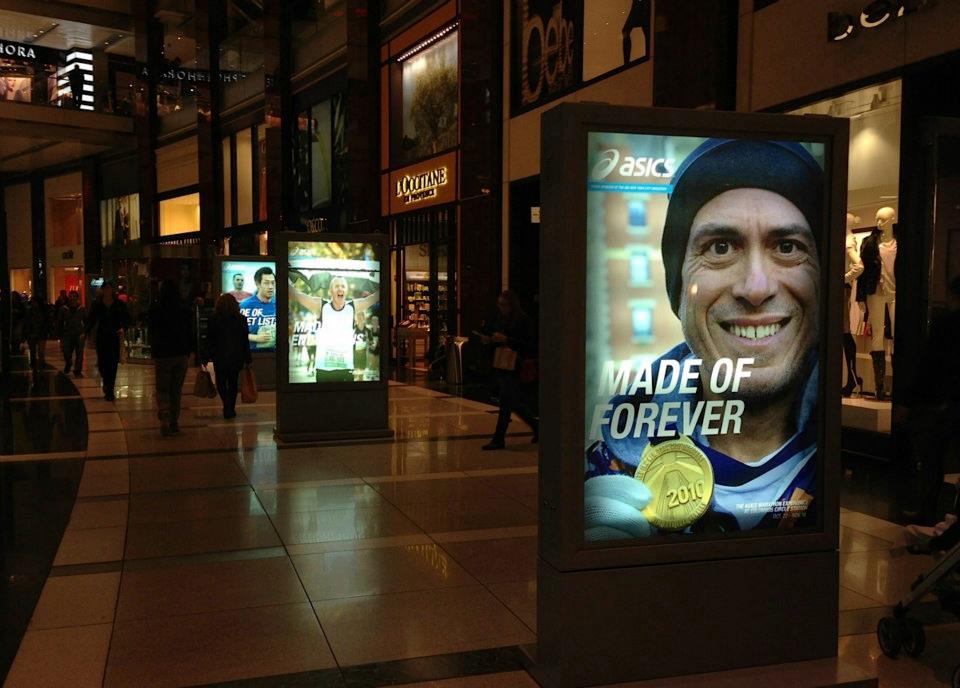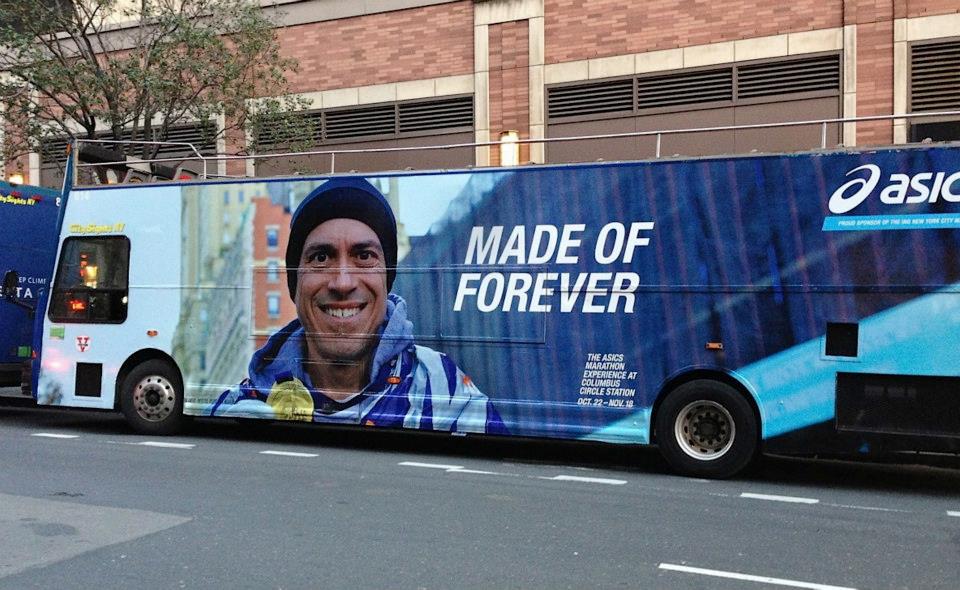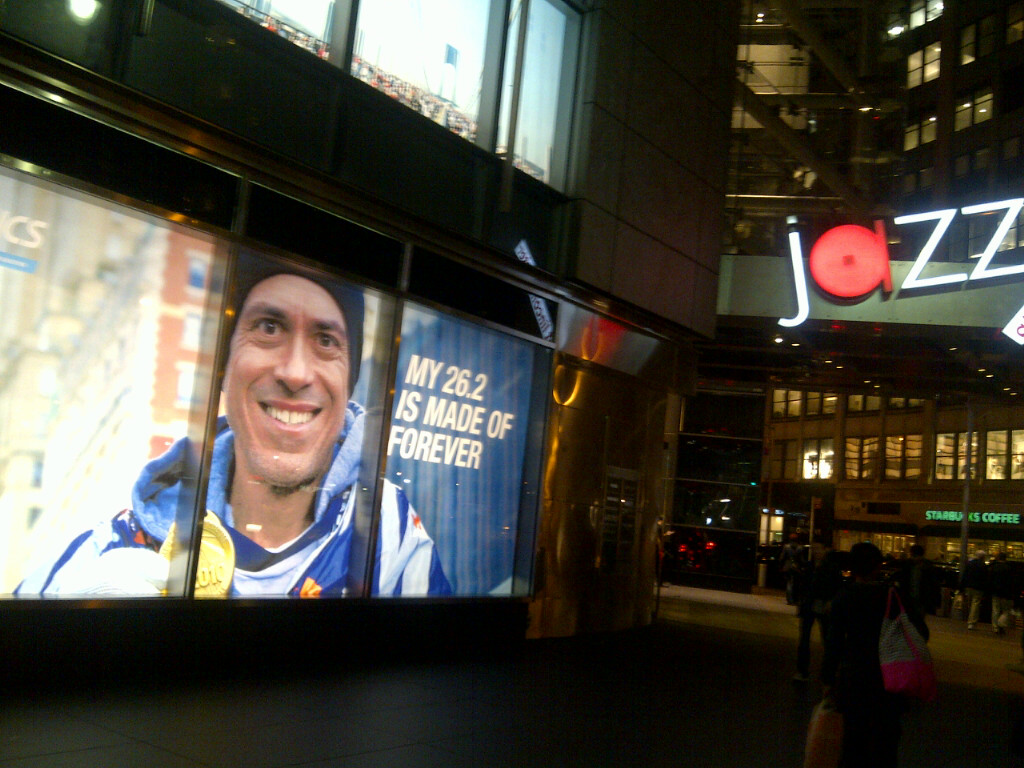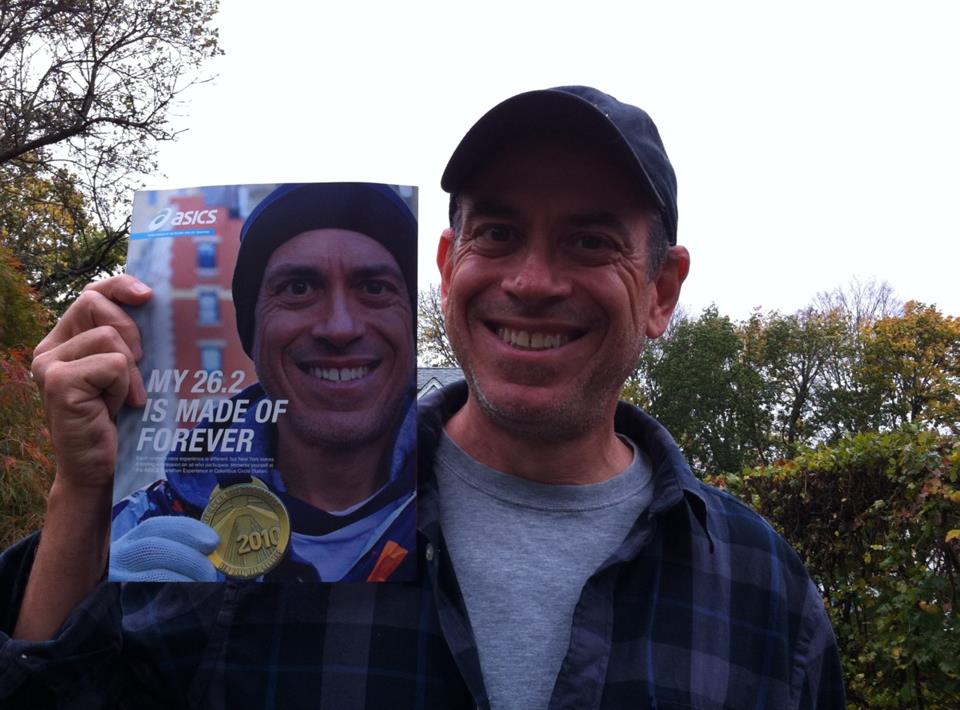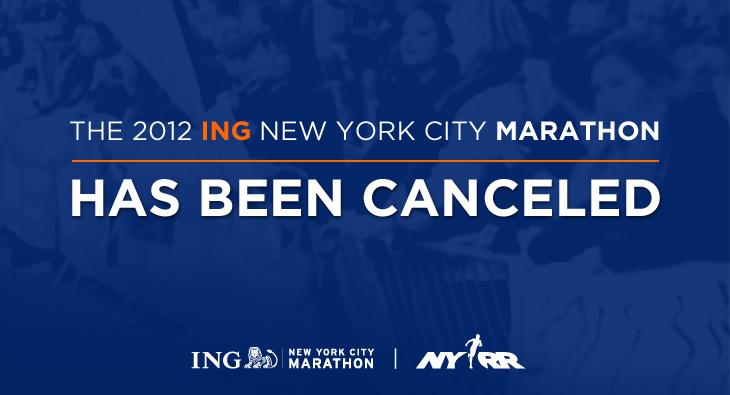 I assume that my readers know already, as this is the type of news that flies quickly around the web, that the NYC Marathon was cancelled. And that this cancellation came just hours after Mayor Michael Bloomberg had reiterated his position that the marathon would go forward. Will there be legal fallout (a/k/a lawsuits) over that decision?
I assume that my readers know already, as this is the type of news that flies quickly around the web, that the NYC Marathon was cancelled. And that this cancellation came just hours after Mayor Michael Bloomberg had reiterated his position that the marathon would go forward. Will there be legal fallout (a/k/a lawsuits) over that decision?
When the decision was first made about the race going forward, there was one key point in my mind: Would any resources be diverted from those hit hard by the tsunami of water that was Hurricane Sandy? If the answer is yes, then you don’t run the race. You just don’t let people struggle any longer than necessary to put on the event. An emergency had been declared, the race would be cancelled and that would be that. Those that paid money for airlines, hotels and whatnot would have to fend for themselves with any trip insurance that they might have had, if any, but that is life for things we lawyers like to call Acts of God. This certainly qualifies.
But if the answer was no, that the city had sufficient resources to cover the race logistics and handle the areas most badly affected, then you can consider putting on the event. Reasonable minds may differ over whether it should go forward, but logistically it could take place.
Mayor Bloomberg, however, has now done something odd. He said New York City had enough resources to put the race on, and said repeatedly that it would go on, and then reversed course.
But he didn’t reverse course because the city needed those extra cops, according to this statement. He cancelled because it was politically unpopular. His statement was released jointly with the New York Road Runners Club, but whether there are sufficient police to staff the marathon and handle the disaster is obviously a city decision, not a Road Runners decision. The joint statement read (and note my highlights in the middle):
“The Marathon has been an integral part of New York City’s life for 40 years and is an event tens of thousands of New Yorkers participate in and millions more watch. While holding the race would not require diverting resources from the recovery effort, it is clear that it has become the source of controversy and division. The marathon has always brought our city together and inspired us with stories of courage and determination. We would not want a cloud to hang over the race or its participants, and so we have decided to cancel it. We cannot allow a controversy over an athletic event — even one as meaningful as this — to distract attention away from all the critically important work that is being done to recover from the storm and get our city back on track.
So what of those that relied on his comments to come to the city from overseas, of which they anticipated about 20,000? And those that traveled here from distant states?
If he canceled because he underestimated the needs of the police, that would be one thing. Things can change in a state of emergency as officials try hard to gain as much information as possible from broken information systems. If there was an understaffing possibility, he could have, and should have, hedged. He should have ‘fessed up that he messed up when it came to resources.
It’s also worth noting that the ability to staff the race may not be as certain as the mayor said. Patrick J. Lynch, president of the police officers’ union said staffing was too low, with many members of the department suffering the effects of Hurricane Sandy, to hold the marathon. “We are spread far too thin fighting crime, terrorism and the effects of this disaster,” Mr. Lynch said in a statement.
I’ve never heard of such a circumstance before, and the lack of precedent opens the door to the inevitable: Those that spent money relying on assurances the event would go forward only to have it canceled because it was a politically unpopular decision, may be angry.
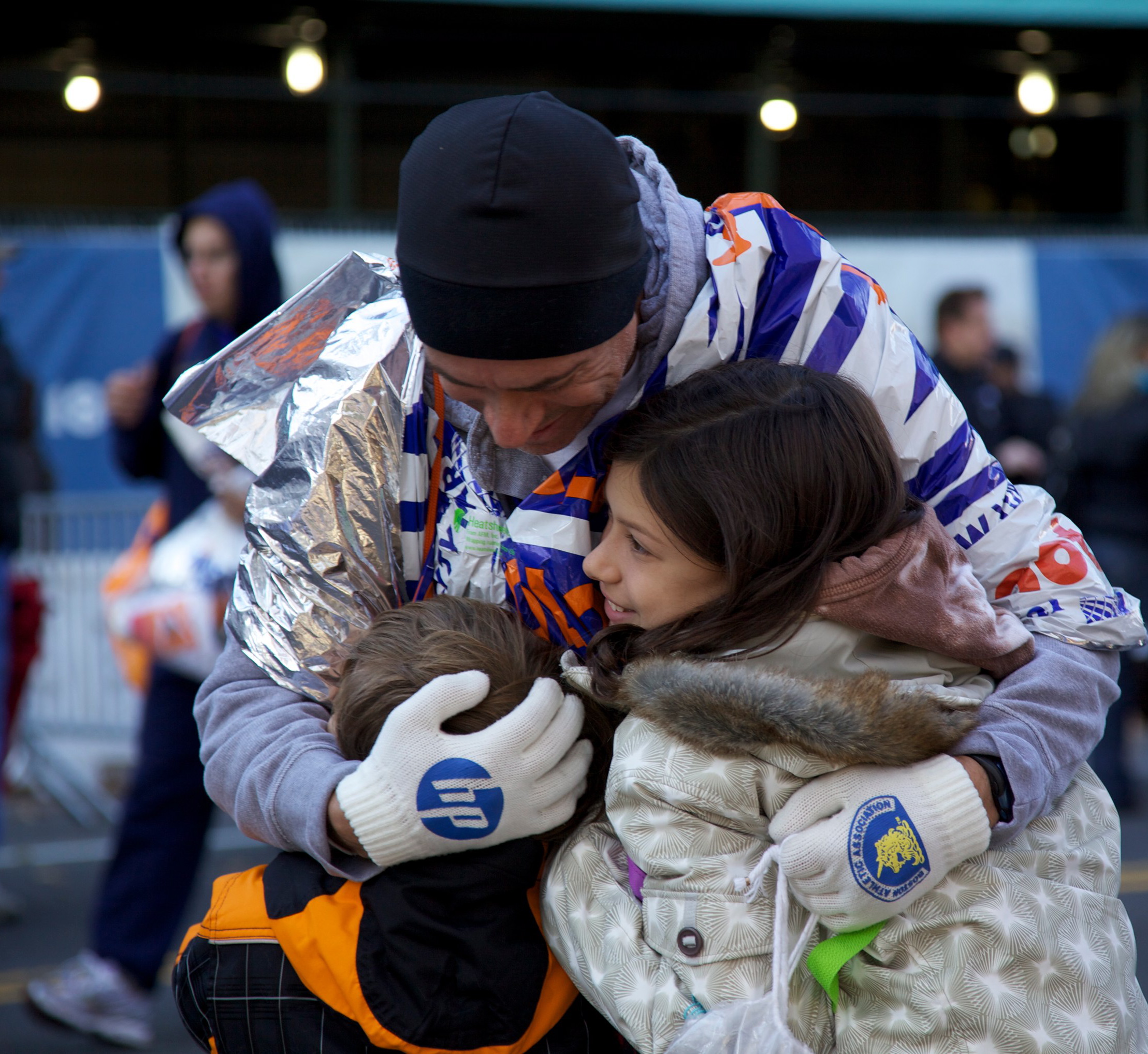
Finish line, 2010, with my kids
Long time readers know, of course, that this is one of my favorite races, I currently appear in ads for one of the sponsors, once did a Blawg Review based on it and had a letter published in the New York Times regarding it. If you have an interest in suing, in other words, don’t call me. I’m not your man and that isn’t what I use this blog for.
But I have to think that, due to the way Bloomberg fumbled this situation and people lost money relying on his assurances, that someone may try to hold him (or the New York Road Runners, of which I’m a member) accountable.
Donations to those in need can be made here:
Red Cross, Greater New York Region
Updated 11/7/12 – Two articles worth mentioning: The first is from Runner’s World discussing the potential legal implications of canceling the event, whether this represents a breach of contract, and whether the “no refund” policy was prominent and clear:
While runners wait to hear what the New York Road Runners will do regarding entry fees for this year’s canceled marathon, some have wondered how a court of law would view the matter.
(In that same vein, I just created a page on the no refund policy for my own race on the Paine to Pain site that will be linked to the home page for next year’s event.)
The second article comes from the New York Times, discussing the hostility that exists for some runners over the late cancellation of the race. It should be noted, of course, that while some are hostile, many others agreed with the decision to cancel. And some who had planned to run with mixed feelings were actually relieved at the decision.
